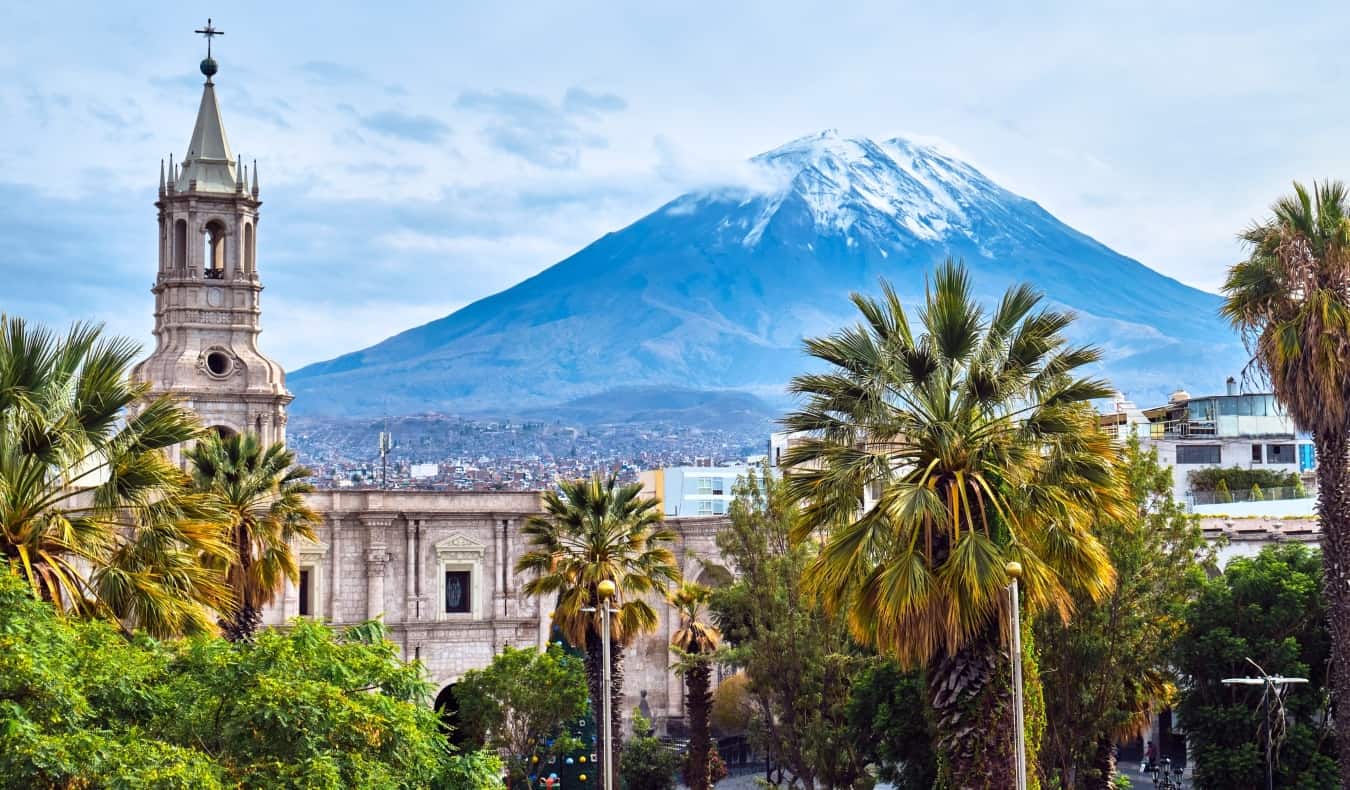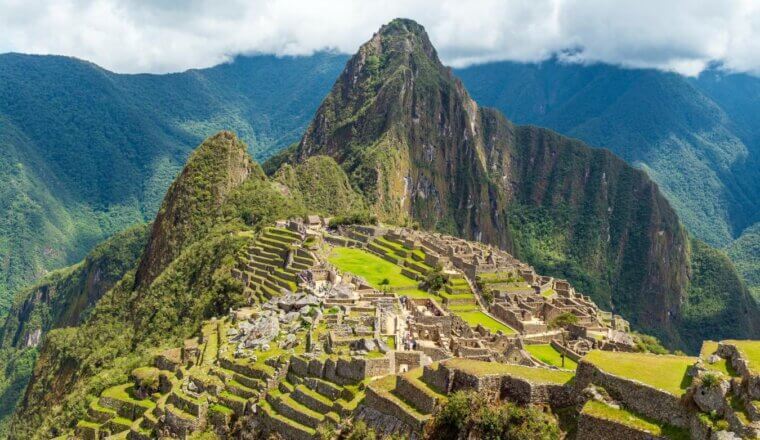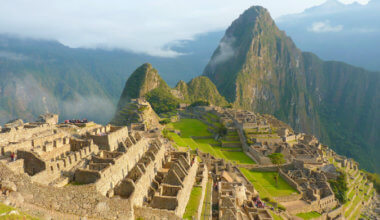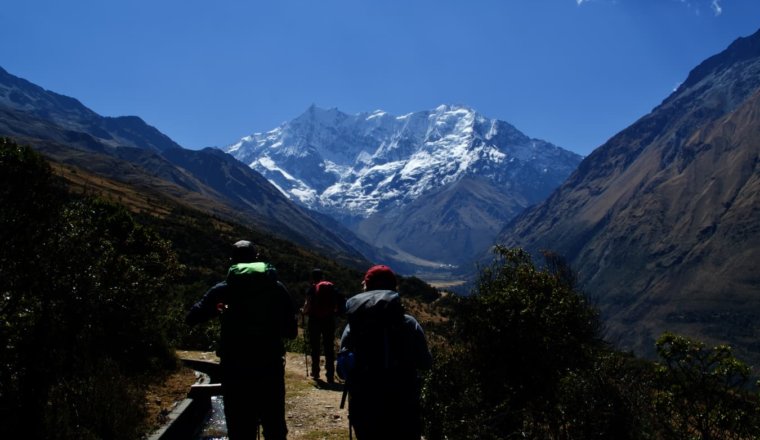
Last Updated: 8/25/2023 | August 25th, 2023
Peru, the third-largest country in South America, and before the pandemic, was receiving over four million visitors each year.
Whether it’s to visit Machu Picchu, the floating islands of Lake Titicaca, the Nazca Lines, or the vibrant capital city of Lima and its blossoming food scene, people are flocking to Peru in droves.
It’s a gorgeous country so that shouldn’t come as a surprise.
However, I also often hear and read about tourists getting mugged or their things being stolen. I get worried emails from travelers wondering if Peru is safe to visit due to political unrest.
Today, I want to answer their questions:
Is it safe to visit Peru? What do you need to look out for? What precautions do you need to take?
In this post, I’ll share everything you need to know to safely visit Peru.
Table of Contents
11 Safety Tips for Peru
In general, Peru is a safe place to visit. You’re not going to get kidnapped or murdered there. But Peru does require you to be a bit more vigilant than other destinations. There is a lot of petty crime, especially among those who are careless, leave valuables around, and walk around at night without a second thought.
Here are some tips to help you plan and prepare for a safe visit to Peru:
1. Avoid displaying any expensive belongings – Keep your jewelry out of sight (or even leave it at home). Don’t flaunt valuables. Be especially aware of taking out your phone, as phone theft is rampant (over 4,000 phones are reported stolen every day). Don’t even wear AirPods on the street. In short: always keep an eye on your stuff. Minimizing the target on your back that says, “I’m carrying a lot of valuable stuff” is very important.
2. Be aware of thieves or muggers working in pairs or small groups – The trick of distracting you (for example, someone “accidentally” bumping into you, or a group of kids playing or fighting near you) is often used so that an accomplice can rob you while you’re not paying attention to your belongings. Don’t fall for distractions and keep your guard up. A common type of theft is where two men on a motorbike pull up to you, snatch your bag, and drive off, so be especially aware of motorbikes and don’t walk on the sidewalk right next to the road.
3. Keep an eye on your belongings at all times – In crowded places or on public transit, be aware that thieves could be looking to literally pick your pocket or slash your bag. Keep some small bills in a separate pocket, so that when you’re paying for things, you don’t need to put your whole wallet or purse on display.
4. Keep your valuables separate – When you’re going out for the day, leave some credit cards and cash locked in your accommodation. That way, if you lose your wallet, you’ll still have cash and cards back at your hostel. In general, it’s a good idea to make photocopies of your passport to take with you and lock up your passport in your hostel locker. Keep digital copies of your passport in your email inbox too just in case.
5. Download the Prey app to your phone and laptop – If either device gets stolen, you’ll be able to track it and remotely turn on your camera to photograph the thief (you can also wipe the data and message the thief too). It costs just $1.10/month.
6. Avoid traveling alone at night – There have been incidents of people being mugged as they leave a taxi at night in the cities, and repeated reports of bandit activity after dark in some areas, such as Tingo María, northwest of Lima, at the entrance to the Tingo María National Park. Try to travel with friends or other travelers at night as there is safety in numbers.
7. Choose a reputable bus operator – Sometimes the cheapest option isn’t the best one. Some of the cheap bus companies have the most reckless drivers and lots of breakdowns, and since Peru has some of the world’s worst traffic accident rates, you’re usually safer using a slightly pricier bus company. Some of the most reputable bus operators include Cruz del Sur, Oltursa, Civa, and Movil Tours.
8. Don’t use drugs – Since Peru produces a lot of cocaine, tourists (especially young backpackers) tend to do a lot of it here. It’s not worth the risk, however, since if authorities even suspect you of using drugs, you can be detained for up to 15 days. Buying drugs here supports organized crime, so be smart and skip the drugs.
9. Learn some Spanish – Being able to speak some basic Spanish will help you in many situations, but if you get in trouble and need help, then you’ll really appreciate it. Start with an app like Duolingo to master some basic vocabulary. Google Translate app is also a must-have app (download the Spanish language to your phone so you can translate offline).
10. Be careful in the coca-growing areas – In the Huallaga Valley north of Tingo María, cocaine is still being produced. And in the same area in recent years, the Shining Path group (a communist revolutionary organization) has been part of some violent incidents. Although tourists are not generally targeted by drug traffickers or Shining Path members, you still need to be extra vigilant in these areas.
11. Buy travel insurance – Things can go wrong on the road. That’s why I never go anywhere without travel insurance. From theft to injuries to delayed flights, travel insurance is there to ensure you don’t go broke. It’s just a couple bucks a day (often less) and provides peace of mind. Don’t travel here without it!
I recommend SafetyWing for travelers under 70, while Insure My Trip is the best choice for travelers over 70.
You can use this widget to get a quote for SafetyWing:
For more information on travel insurance, check out these posts:
- What Does Travel Insurance ACTUALLY Cover?
- The Best Travel Insurance Companies
- How to Buy the Best Travel Insurance
With these travel tips, you’ll be able to stay safe while you visit or backpack around Peru! Furthermore, here are answers to some frequently asked questions we get.
Is Machu Picchu safe?
Machu Picchu is such a common tourist destination that you’ll most likely be safer here than any other part of Peru. Chances are you’ll be hiking with a group or in a crowd, so pickpockets and other petty thieves are unlikely to be around. It’s much more important to be vigilant in cities like Lima or Cusco.
The more important safety issue if you are hiking to Machu Picchu is to take care of your health. Make sure you have plenty of water, and use sunscreen and hats to deal with the heat. If you’re not acclimatized to the altitude, then altitude sickness can be a problem; you need to take it seriously if you start to feel sick. Avoid this by staying in Cusco for at least a couple of days before visiting Machu Picchu.
Finally, if you use a guide, which is recommended when hiking, make sure they are a licensed operator, as you sometimes hear of unlicensed guides taking you the wrong route and keeping your hiking permit payment for themselves.
Is Peru safe to travel alone?
Solo travel is pretty common in Peru, and you’ll often find plenty of other solo backpackers to spend time with, so it’s unlikely you’ll be alone that much.
Bus travel and being out after dark anywhere is safer in a group, but in general, solo travel in Peru is no more dangerous than traveling with friends or a partner.
Just remember to avoid standing out and looking like a tourist. Don’t dress in fancy clothes, don’t wave your expensive gadgets around, and if you get lost, don’t stand there staring at a map. Basically, avoid sticking out like a sore thumb, and you’ll reduce the chance of a petty thief deciding you’re their next victim.
Is it safe to travel to Peru with kids?
On the whole, it’s not especially unsafe to take your kids to Peru. Family and children are very important in the Peruvian culture, so you and your kids will be made to feel very welcome.
Be careful with particularly small children, though, because they’re more susceptible to getting sick from unfiltered water, for example. It’s also not recommended to take kids under three to high altitudes such as Machu Picchu.
Is Peru safe for female travelers?
It’s not particularly unsafe to be a female traveler in Peru, though you might be the victim of some unwanted attention, mostly in the form of catcalling. Local women in Peru rarely go out to bars without men, so if you are a women-only group in a bar, you might get some extra attention.
Avoid being alone if you can, especially after dark, because petty thieves will see you as an easy target. Having said that, if you are a solo female traveler and need help, most locals will be very understanding and do their best to assist you.
Can you drink the tap water in Peru?
While tap water is plentiful in the country and indoor plumbing is common, it’s advised that you either drink bottled water or boil all your drinking water while in Peru. Make sure to boil your water for at least one minute to remove any contaminants. Additionally, you can use a Lifestraw, which not only ensures that your water is always safe to drink but helps you avoid single-use plastic.
Are taxis safe in Peru?
Taxis are relatively safe, but you’ll want to make sure that you only use authorized taxis and that you know the rate in advance. If you need a taxi, have your hostel or hotel call one for you and find out what the rate is in advance. Make sure you agree on the fare with the driver in advance, as taxis don’t use meters so it’s easy to get overcharged if you’re not paying attention.
Try to avoid riding alone at night, especially if you’re a solo female traveler.
How Safe is Lima?
As Peru’s capital and largest city, crime is naturally higher here than elsewhere in the country. Protests and riots are more likely to happen here as well. However, that doesn’t mean that you shouldn’t visit this vibrant city, just that you should take extra care here.
Don’t walk around alone at night, unless you’re in the safer neighborhoods, such as Miraflores and Barranco (though it’s always best to not walk around alone after dark at all). Steer clear of civil uprisings (which usually take place in the historic center near capital buildings) to avoid getting caught in the middle.
While petty theft is a risk, most violent crime takes place in neighborhoods that tourists don’t tend to visit, and between people who know each other. Follow the above guidelines and enjoy your time in Lima!
Peru is an amazing destination no matter what your interests, with a rich culture, welcoming people, beautiful landscapes, and fascinating historical sights.
You do need to be cautious about your personal safety, however. The most common issues travelers face there are petty theft and pickpocketing, but by exercising a bit of extra vigilance and common sense, you can minimize your risk. Be sure to make sure that you’re not carrying valuables in an obvious way and don’t have large sums of cash in one place.
Peru is a relatively safe country to visit, so don’t let the stories put you off. The amazing attractions will definitely make your trip worthwhile!
Book Your Trip to Peru: Logistical Tips and Tricks
Book Your Flight
Use Skyscanner to find a cheap flight. They are my favorite search engine because they search websites and airlines around the globe so you always know no stone is left unturned!
Book Your Accommodation
You can book your hostel with Hostelworld as they have the biggest inventory and best deals. If you want to stay somewhere other than a hostel, use Booking.com as they consistently return the cheapest rates for guesthouses and cheap hotels. My favorite places to stay are:
- Pariwana Hostel (Lima)
- Kokopelli (Cusco)
- Arequipay Backpackers Downtown (Arequipa)
Don’t Forget Travel Insurance
Travel insurance will protect you against illness, injury, theft, and cancellations. It’s comprehensive protection in case anything goes wrong. I never go on a trip without it as I’ve had to use it many times in the past. My favorite companies that offer the best service and value are:
- Safety Wing (for everyone below 70)
- Insure My Trip (for those over 70)
- Medjet (for additional repatriation coverage)
Looking for the Best Companies to Save Money With?
Check out my resource page for the best companies to use when you travel. I list all the ones I use to save money when I’m on the road. They will save you money when you travel too.
Want More Information on Peru?
Be sure to visit our robust destination guide on Peru for even more planning tips!


